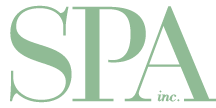The Wide World of Wellness
The term ‘wellness’ has been percolating up with increasing intensity within the spa industry for years and has now exploded onto spa menus. The increased focus on wellness is fueled in part by the pandemic, which has shone a harsh light on the importance of our overall health and well-being.
But what exactly is “wellness?” The Global Wellness Institute defines wellness as “the active pursuit of activities, choices and lifestyles that lead to a state of holistic health.”
Research from McKinsey & Company reports consumers are viewing wellness across six dimensions which address better health, fitness, nutrition, appearance, sleep and mindfulness.
While those six categories remain broad, they encompass the proliferation of wellness offerings available at spas across Canada with each one interpreting ‘wellness’ differently.
Spa and Wellness Trends to Watch For 2022
Wearable Technology
Wearable tech is a trend dominating the drive in all the above categories, with the exception of better appearance. A smartwatch, Fitbit, Oura ring and other devices assist in providing both real-time and historical data that the user can interpret to monitor progress.
Medical, fitness and spa professionals are starting to utilize the content from a client’s device as well, allowing for longer-term, more engaged wellness programming options with progress effectively tracked with data-driven goal posts.
Mental Wellness and Meditative Programs
Guests are seeking innovative stress reduction programs and those that immerse them in nature. Ontario’s popular destination spa, Ste. Anne’s, offers equine therapy, sound baths with Tibetan singing bowls, chakra activation classes, and meditation programs including labyrinth walks and fire meditation.
Salt caves, float tanks and oxygen therapies continue to appeal to some guests seeking meditative, holistic, wellness experiences.
Enhanced Medical Programming
Watch for spas to expand their offerings far beyond the traditional spa treatments and classes, delving more into medical assessments and interventions.
Kur Spa at Sparkling Hill boasts “100 transformative treatments and services” on their website, with options ranging from naturopathic medicine, personalized health programs, preventive treatment plans, hemodynamic tests for high blood pressure and nutritional counselling.
Medical diagnostic equipment is also becoming entrenched in spa’s wellness programming. As an example, the BodPod provides body composition testing to calculate the guest’s body fat and lean mass. This data is then used to help create customized fitness and nutritional programs for guests.
Hormone Health
Bio-identical hormone replacement therapy (BHRT) is becoming more mainstream within medical spas and wellness centres, with the recognition of how hormone health impacts our overall health and wellness.
Dr. Lizette Lourens, owner of the medical spa and wellness centre, Age Management Institute in Calgary is well-known for her comprehensive hormone programs.
“Optimizing hormones through the aging continuum has a multitude of benefits for health and wellness. It’s the best way to help prevent dementia, reduce inflammation, protect against cardiovascular disease, and to support structural health like muscles and bones.”
“There’s a great quote from Bishop Desmond Tutu, that I use when explaining hormone health to clients – ‘There comes a point where we need to stop just pulling people out of the river. We need to go upstream and find out why they’re falling in.’ BHRT is preventive medicine to reduce the risk of serious disease as we age. It helps stop people from falling in the river, rather than waiting until they need more serious medical intervention due to disease.”
Though Dr. Lourens cautions spas against introducing superficial BHRT programs that don’t include a comprehensive assessment to properly determine hormone levels and optimize for each individual, as it varies widely from one client to the next. Hormone balancing is very complex; you can’t achieve a productive outcome in an hour, and without proper diagnostics.”
Brain Health
With the aging of the baby boomer generation, there is an increasing interest in brain health and reducing the risk for dementia and Alzheimer’s.
Spas and wellness centres are launching brain health programs, many of them utilizing the ReCode program developed by Dr. Dale Bredesen, and outlined in his best-seller, “The End of Alzheimer’s”.
Treatment protocols include addressing specific diet, nutritional deficiencies, environmental toxins and hormone imbalance.
Genetics and Neutrogenomics
Age Management Institute in Calgary recently launched a genetic program that takes a deep dive into the data hidden within a guest’s genetic report from companies like 23andMe, interpreting the SNPs (part of the genetic code) and uses neutrogenomics to create a customized action plan for guests. The plan includes lifestyle, nutritional and supplementation recommendations to help stop specific genes from expressing themselves, assisting in the prevention and treatment of disease. Functional Medicine Coach Leah Boucher leads the program.
Vitamin Injections, Infusions and IV Therapies
Vitamin injections, infusions and IV therapies remain popular as ‘boosting your immune system’ has become a buzz phrase during the pandemic. Chelation therapy to remove heavy metals from the blood is also seeing a rise in popularity. Chelators are believed to bind to metals in your bloodstream, creating a compound that can then be filtered by the kidneys and released in your urine.
Sustainable Skincare
Consumers are evaluating their skincare products and choosing brands with a strong commitment to sustainability and reducing their environmental impact. More people are choosing a natural option over products that may be more effective with active ingredients. Look for brands to continue reducing their packaging and providing more refillable options.
And while many brands tout their ‘customized’ approach, bespoke skincare products and treatments are on the rise. Brands like Dermaviduals have aestheticians custom-blending products onsite for each guest, reminiscent of old-style apothecaries.
Contact-Free Treatments
Spas may be struggling to achieve a balance between the pandemic-induced desire for personal space, with the inherent desire for human touch and connection that spas are known for. Touchless treatments and technology are on the rise, with brands like Elemis introducing a ‘no contact’ facial and Ste. Anne’s Spa offers a class for self-administered acupressure using massage balls.
Workplace Wellness
It’s imperative for spas and wellness centres to not only meet the needs of their guests but of their team, too. Emerging workplace wellness trends include extended lunch breaks to allow staff members time to go for a walk or a workout, a staff yoga room to stretch and meditate between treatments, fitness subsidies, complimentary healthy snacks, and offering free telemedicine and mental health check-ins with professional resource partners.
The pandemic and the resulting restrictions have had a devastating impact on spas, though it has also increased awareness of the importance of actively engaging in the pursuit of wellness for health and longevity. Spas and wellness centres are poised to play a significant, productive role in the public’s quest for enhanced wellness – however you define wellness.



